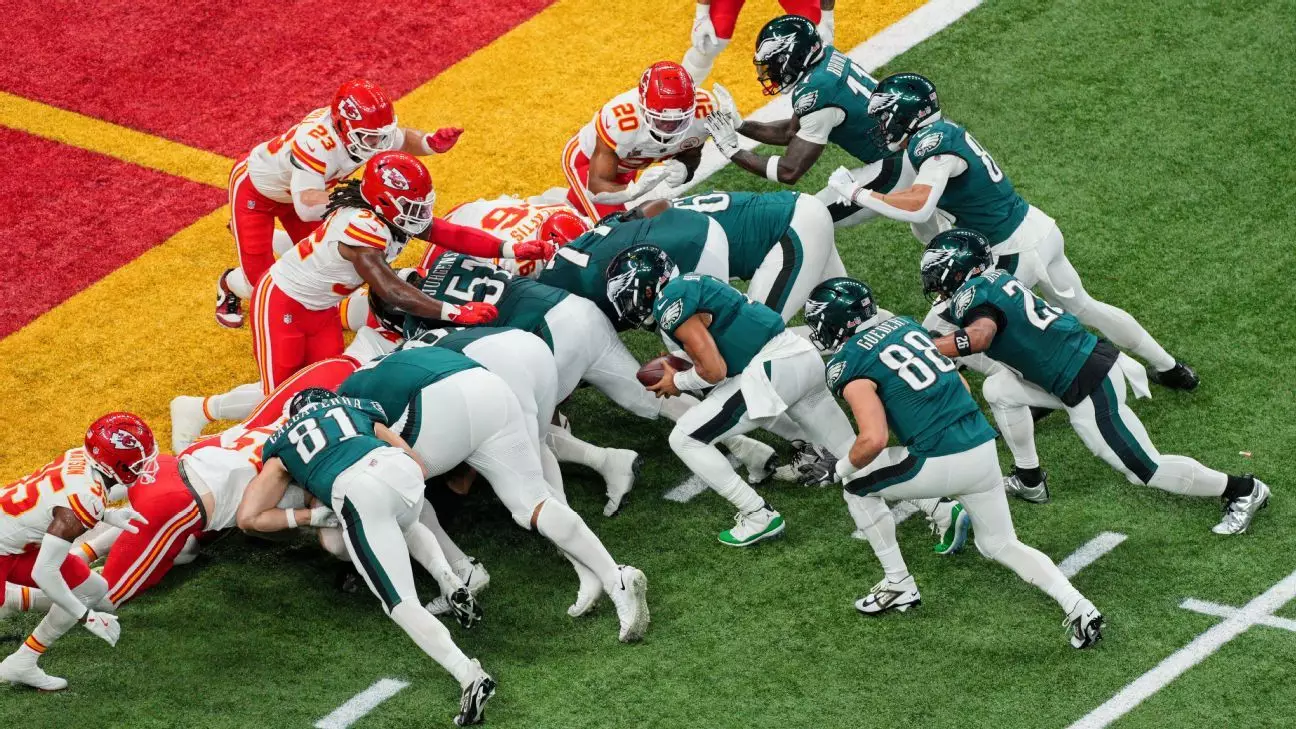In the realm of professional football, rules and strategies continually evolve, often igniting debates among coaches, players, and executives alike. One of the most talked-about plays in recent times is the “tush push,” a strategic quarterback sneak that has proven remarkably effective for certain teams, particularly the Philadelphia Eagles and Buffalo Bills. However, the recent proposal to ban this maneuver has rekindled discussions about its legitimacy and the broader implications for the game’s integrity.
The Proposal: What’s at Stake?
Recently, a team in the NFL has put forth a proposal to officially ban the tush push. Troy Vincent, the NFL’s executive vice president of football operations, confirmed this during the scouting combine, although he refrained from naming the team behind the suggestion. This proposal could be put to a vote at the upcoming spring owners’ meeting in Palm Beach, Florida, where at least 24 out of 32 owners would need to favor the change for it to pass. The potential ban raises significant questions about fairness, strategy, and the ongoing evolution of NFL play styles.
The tush push involves a quarterback being backed up by other players for a surge forward, leveraging collective strength to breach defensive lines. While this play has become a hallmark of the Eagles’ style of play, resulting in an impressive 87% success rate in achieving touchdowns or first downs, there is growing concern that it presents an unfair advantage—a sentiment echoed by Vincent in his comments regarding potential adjustments.
The Success of the Play: A Tale of Two Teams
The Eagles and the Bills together accounted for a staggering 163 successful executions of the tush push over the last three seasons, overshadowing the rest of the league. The difference in success rates between these teams and other franchises highlights the disparity in outcomes that can arise from a single tactical choice. The Eagles, in particular, showcased their prowess in this tactic during key games, such as scoring their first touchdown in Super Bowl LIX through the play. They not only capitalized on its effectiveness but also drew attention to its unique character—referred to in this case as the “Brotherly Shove.”
The question arises: Is it fair for one team to dominate in execution due to their superior utilization of a specific play? Critics argue that allowing such a tactic to remain in play without modification can lead to an uneven competitive landscape, where tactics become disproportionately advantageous to a few elite teams.
NFL teams present rule proposals each season, reflecting the fluid nature of competitive strategies in the league. The success of a play such as the tush push raises critical concerns about the balance between tradition and innovation in football. While adjustments and rule modifications can serve to protect player safety and promote fair competition, they also risk diluting unique aspects of the game that fans, players, and coaches have come to cherish.
Vincent pointed out that discussions surrounding the tush push initiated over three years ago, alongside controversial tackles like the hip drop. This historical context illustrates how play styles undergo scrutiny and leads to rule changes that reflect the shifting landscape of tactics. The NFL must navigate these changes delicately, balancing the desire for innovative strategies with the need to maintain the integrity of the game.
As the league prepares for deliberations on this rule proposal, the fate of the tush push hangs in the balance. Will the NFL owners vote to uphold the status quo or implement a significant change to the way quarterback sneaks are executed? The decision will not only shape the tactical landscape for coming seasons but may also influence how teams strategize in critical moments.
The discussion around banning the tush push symbolizes larger issues at play in professional football—issues of fairness, safety, and the essence of the sport itself. The outcome of this proposal could redefine the dynamics of quarterback sneaks and the strategies employed by teams, ensuring that the dialogue around what constitutes fair play continues long into the future.

Leave a Reply